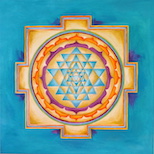TECHNIQUES OF HATHA YOGA
Hatha Yoga system according to Hatha Yoga Pradipika has several techniques, some are equal with the Patanjali Yoga system (on this page read about the moral life of a man, and how to get rid of the habits and become an noble man, see this and all other attached pages).
These techniques are:
– Yamas and Niyamas
Unlike Patanjali, Swatmarama states:
ten Yamas (restraints):
ahimsa, truth, non-stealing, continence, forgiveness, endurance, compassion, meekness, moderate diet and cleanliness, and
ten Niyamas (observances):
austerity, contentment, belief in God, charity, adoration of God, hearing discourses on the principles of religion, shame, intellect, tapa (heat, meaning energy released by practice) and yajna (devotion)
(from The Forceful Yoga, translation by Pancham Singh, Rai Bahadur Srisa Chandra Vasu)
– Asanas or body postures
– Pranayama, or expansion of prana, a conscious control of breath, also known as breathing techniques
– Mudras (mud means pleasure, dru means to draw forth) or hand, or body gestures, also the mental attitudes
– Bandhas (bandha means to lock or to hold) or conscious physical locks in certain areas in the body and redirecting the energy to the higher centers
– Shatkarmas or kriyas (shat means six and karma means action, kriya means purification), or yogic techniques for body cleansing
– Concentration, meditation and deep relaxation
Hence, Hatha Yoga is a very complexed system of practices.
Performing physical postures (or in the worst case called exercise) does not mean that you practice Yoga or Hatha Yoga regardless which label these practices are marked with.
Yoga is neither breathing exercise nor a combination of both, breathing exercises and performing of Yoga postures.
Before a person dares to engage in a discussion about Yoga or Hatha- and Yoga techniques, he should encourage himself.
In addition to all the pages listed above, on the next pages you can read more about The main aim of Hatha Yoga, Nadis, Kundalini and Snake Symbol, Kundalini Shakti , benefits of practice of Hatha Yoga techniques and about practice of body postures.




